Contemporary artist Annie Cabigting’s latest exhibition is on display at the MET in BGC until April 2024.
Annie Cabigting is best known for her photorealist paintings that depict people looking at art. Her works present a level of detail that reveals a heightened degree of meticulousness, while the idea of showcasing individuals looking at art suggests a touch of creative whimsy.
Historically, the contemporary artist has had other out-of-the-box (or out-of-the-frame?) ideas realized into creative work. In 2012, she exhibited Under Wraps at Silverlens Gallery, featuring paintings wrapped in paper, leaving audiences to imagine what lies beneath. She revisited the concept in 2017 with Private Viewing at Finale Art File, where the wrapped works were placed beside canvases depicting what appeared to be empty canvases.
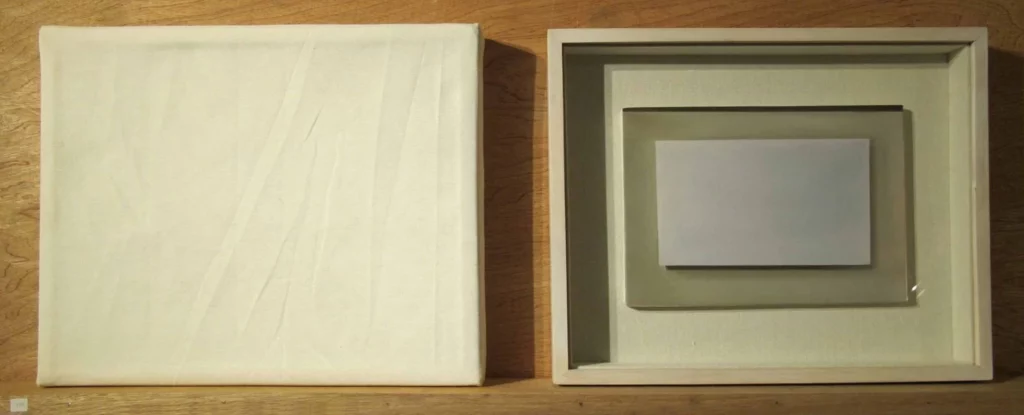
Meanwhile, 2018 saw Annie transform the main gallery of Finale Art File for Museum Watching, which featured her familiar paintings of people looking at art. The deliberate fabrication of a museum atmosphere became part of the experience—not only did the paintings make people self-aware of how they look while viewing art, but the space itself conditioned them to behave a certain way.
With In Storage in 2022 (also at Finale), she transformed the gallery into a warehouse filled with shipping crates containing her paintings. On the boxes were stickers showing rough sketches of the concealed paintings. In Storage had a sense of mystery akin to Under Wraps, albeit on a bigger scale.
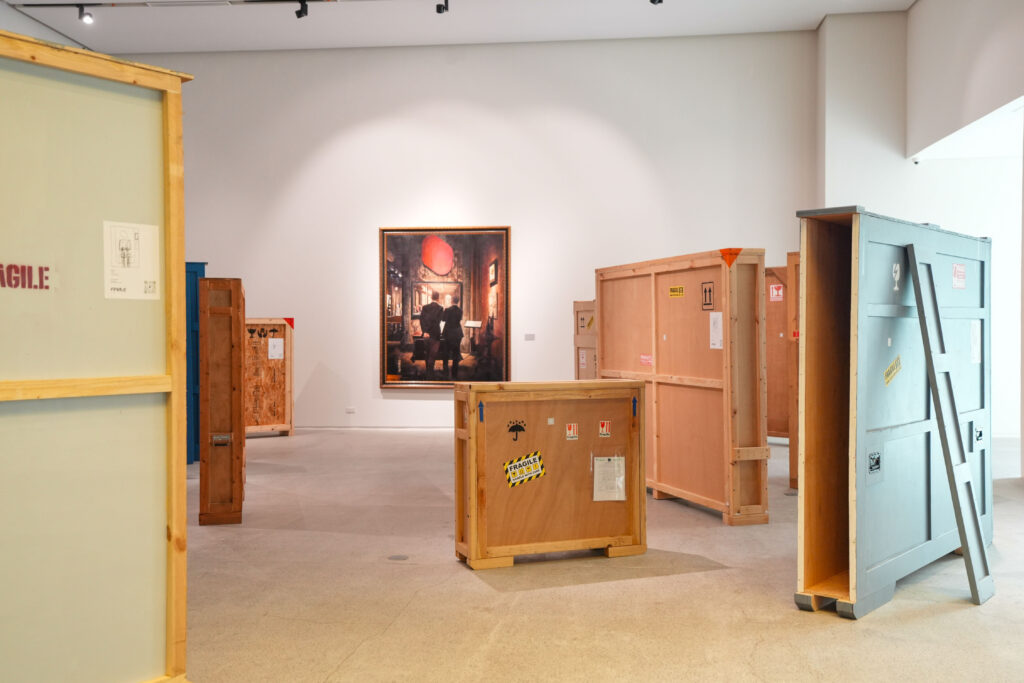
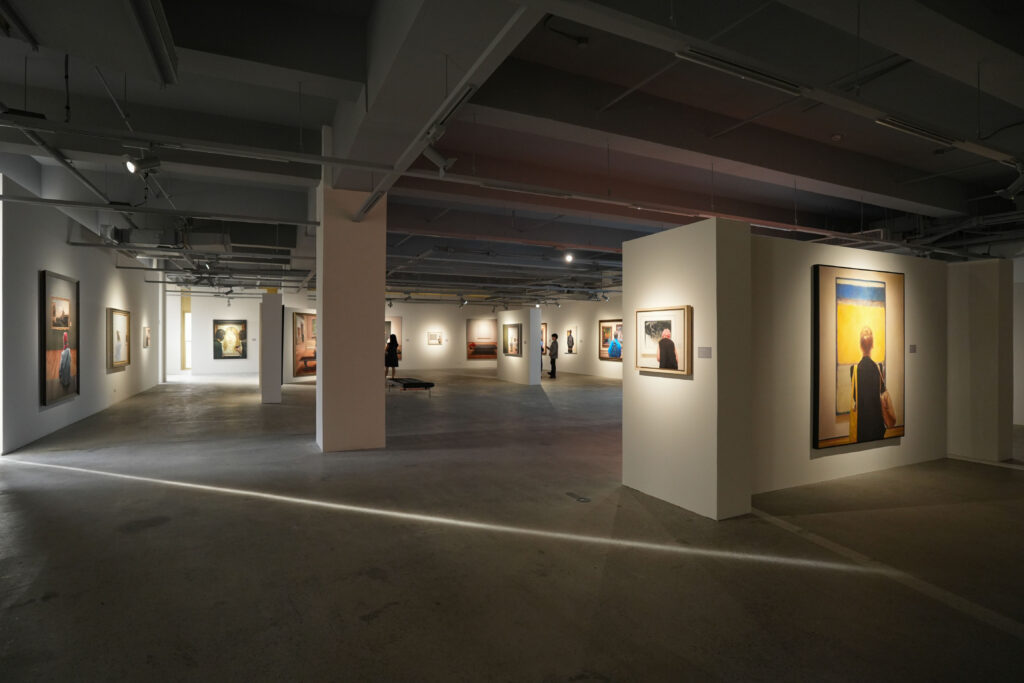

The same crates greet visitors of Annie’s current exhibition at the Metropolitan Museum of Manila at Bonifacio Global City. On display until April 2024, When we look at art… runs parallel to Private Viewing in that the crates situated at the Groundspace the MET are now open. The paintings once hidden are now at the second floor of the museum, joining other works specifically made for the 2023 exhibition, and only one painting remains amid the crates.
It’s easy to think that these exhibits are cheeky for cheekiness’ sake. After all, they’re made by the same artist who previously submitted works on paper (as in “about paper”) to a show that called for works on paper (the medium).
However, the above conclusion is quite misinformed; Annie’s creative playfulness does point toward several interrogations. It makes us reflect on why we consume and experience art the way that we do, whether it’s buying paintings even before seeing them and just stashing them in a private collection (or, God forbid, a storehouse) where they won’t see the light of day, or breezing through paintings in a gallery without being as meditative as Annie’s own subjects looking at art.
With Annie, looking at art is more than just a subject; it is a form of art in itself.
Creative control
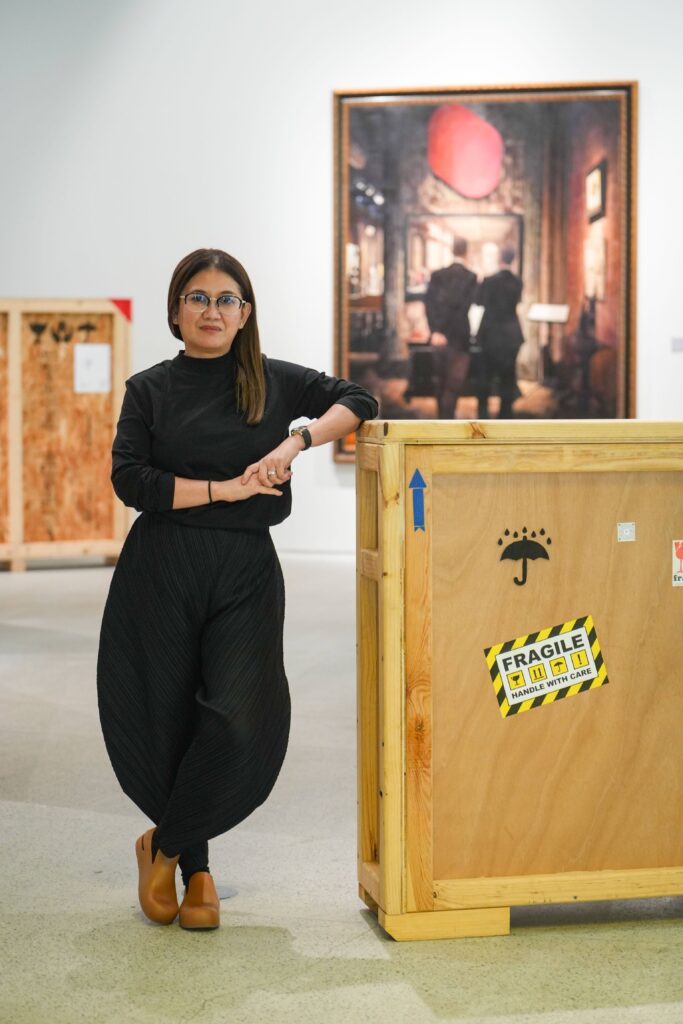
Annie’s meticulousness, both in technique and curatorial intention, manifests in the almost-clinical nature of her studios. She maintains one in Dhaka, Bangladesh (where her husband is from) and another in Metro Manila.
“I made the more recent works in Dhaka. Before, I used to complain to my husband that I had nothing much to do there, so he got the whole floor below our condo unit there for me to use as a studio,” Annie shares. Once she got the space, her uneventful surroundings worked to her advantage, though it still takes time for her to adjust and recalibrate whenever she shuttles between her two studios. “I get to concentrate more in my studio in Dhaka, which is quite big.”
“When I make a studio, I change the whole environment. I redo floors, paint the walls white, and install gray curtains so that the light doesn’t bounce,” she adds. “Even my house is white. I don’t hang paintings; I need a quiet space that won’t distract me.”
This sense of control over surroundings extends to the smallest apparatus in her artist’s toolbox; she has shared in previous interviews that aside from keeping her spaces as clean as possible, she organizes her paints by color, sorts her brushes by size, and places tools like scissors and the like in specific places. “Even at home, whenever the househelp asks for specific items, I have to give many directions. ‘Oh, it’s in the second drawer at the left side of so-and-so…’ In turn, they know where to put things back.”

This clinical approach to her art comes with a few reasons and consequences. On the practical side, controlling the light inside the studio allows Annie to see the pigments as they are—any fluctuations in the light, and Annie would risk working with the wrong color to begin with. “Back in Dhaka, I was once working on a piece wherein the lady viewing the painting was wearing a beautiful purple shirt. When the work landed in the Philippines, it turned blue!”
Annie also admits that there’s a psychological aspect to it that’s rooted in childhood. “We moved quite a lot growing up, and that affected my ability to concentrate. I needed that stability, that sense of rootedness; hence, my ways of concentrating became coping mechanisms. I needed routines to be okay. I used to have difficulties whenever I broke certain steps, but I’m doing better in that regard now.”
A natural consequence of these creative methods is the timing and scale of her exhibits. “I don’t do a lot of work. In a year, twelve pieces is already a lot for me. I would also skip years—I wouldn’t do anything. In the interim, I would play games like Final Fantasy,” she quips (Annie fondly shares that she owns several gaming consoles: a gaming PC, a Nintendo Switch, and a PlayStation 5, among others.)
“For artists, I understand the need to be relevant, but I don’t like the idea of just being relevant now. You should be thinking about how you’d see yourself years from now—the volume, the quality of your work, how they will be seen decades from now.”
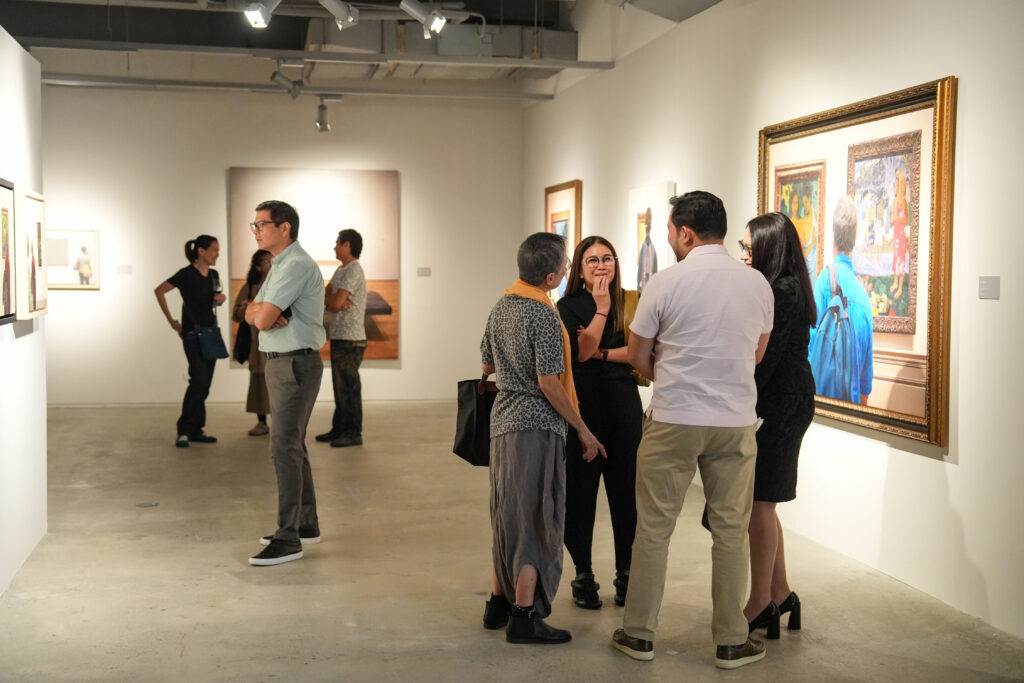
Even amid criticism, Annie remains adamant about her preferred working process. “People say I’m being lazy. But this is me, my process.This is just how it is. When things grow, they have their own time, their own pace, their own learning curves. It’s the same with me and the production of my work, and me thinking about how I’m going to present the work,” she affirms.
But when inspiration strikes, just like with the single work on display at the ground floor of the MET, Annie wastes no time springing into action. “Some paintings tell me when they need to be made. For instance, the painting downstairs was from a photo taken by my friend Miguel,” she shares, referring to this Instagram post uploaded by art consultant Migs Rosales. Annie recalls feeling a rush of excitement when she saw the photo; she immediately asked Migs for a copy. “It’s like ‘Oh my God, it would be such a great experience to paint this!’”
The artist’s prerogative
Annie is realistic enough to understand that there are things beyond her control. This includes—ironically—her own works. “I exert that sense of control only when I’m working. My total experience with a piece happens during the process. The minute it leaves my studio, I can dissociate with it. I can genuinely only appreciate my work after some time,” she notes.
“Once my work enters a gallery, my relationship with the piece changes. I become part of the audience like everyone else. If someone says ‘I don’t like your work,’ that’s fine with me—it’s their experience. Actually, I’d be even more upset if my work was met with indifference. Art should give us that feeling of awe, that visceral reaction.”
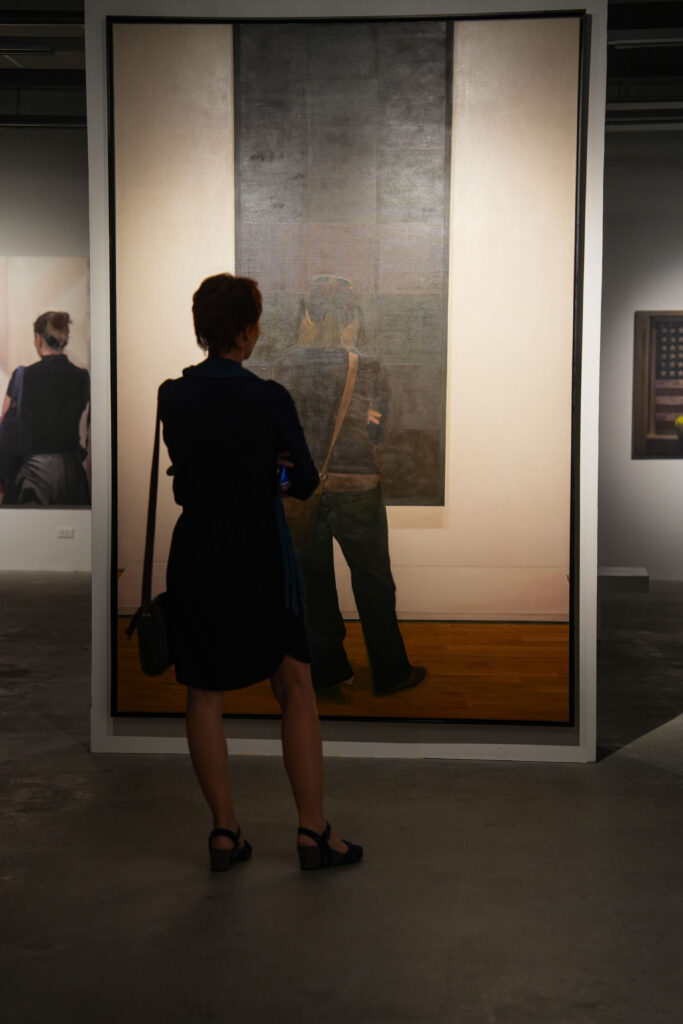


Another thing that’s beyond her grasp is her reputation. She’s been heralded by many magazines and galleries as one of the country’s most celebrated contemporary artists. It’s not unfounded to say that these accolades, coupled with her elusive shows and meticulous techniques, influenced the eight-digit sale of one of her paintings back in 2021.
However, she doesn’t allow this to affect how she does her work.“When my work becomes private property, I have no control over that anymore. It’s theirs already. I don’t bother talking about amounts, I don’t want to think about prices. I don’t want those things to cloud my judgment,” she stresses.
“Instead, I just think of it as a responsibility to do good work and improve. I try to work harder because people trust you. There’s trust there when people buy a work for P15 million. In turn, I try to make improvements.”
But if there’s one thing that Annie controls best, it would most probably be her ego. She admits that, to this day— after several awards, successful shows, and astounding sales—she still doesn’t think that she’s a “true” artist.
“I’m still in denial. I think that’s why I’m able to circumvent ego. I don’t want to buy into what everyone is saying.”






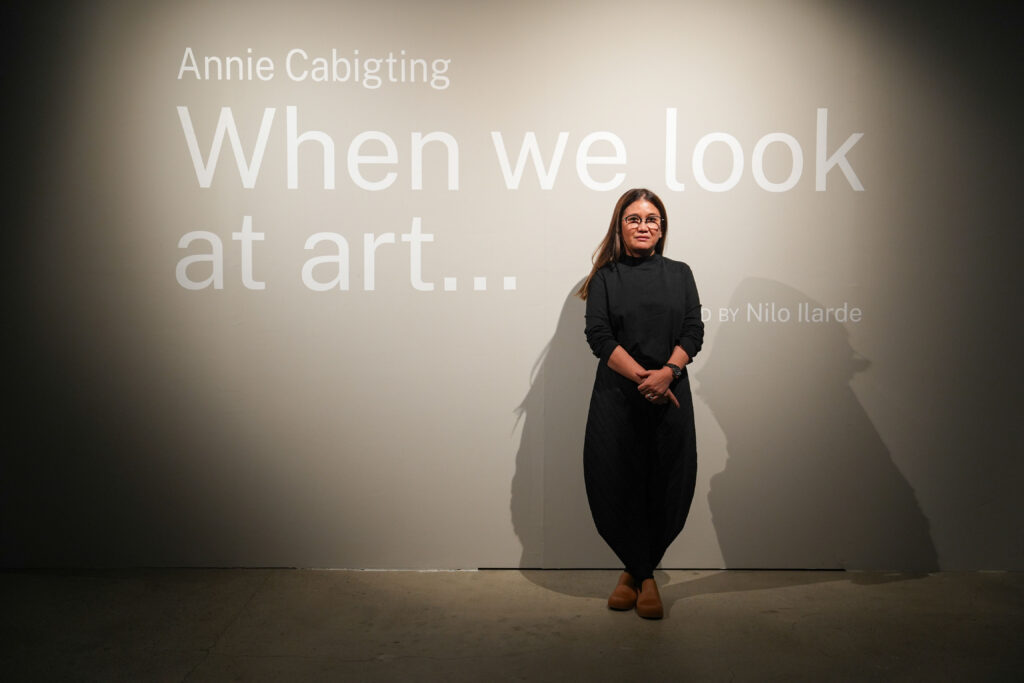


‘When we look at art…,’ Annie Cabigting’s latest exhibition, is curated by Nilo Ilarde. The exhibit is up until April 13, 2024.
The Metropolitan Museum of Manila is located at the MK Tan Centre, 30th Street, Bonifacio Global City, Taguig. Visiting hours are as follows: 11AM-5PM (Tuesday – Friday) and 10AM-5PM (Saturday). For more information, visit https://metmuseum.ph/ and follow their official Facebook and Instagram accounts.




